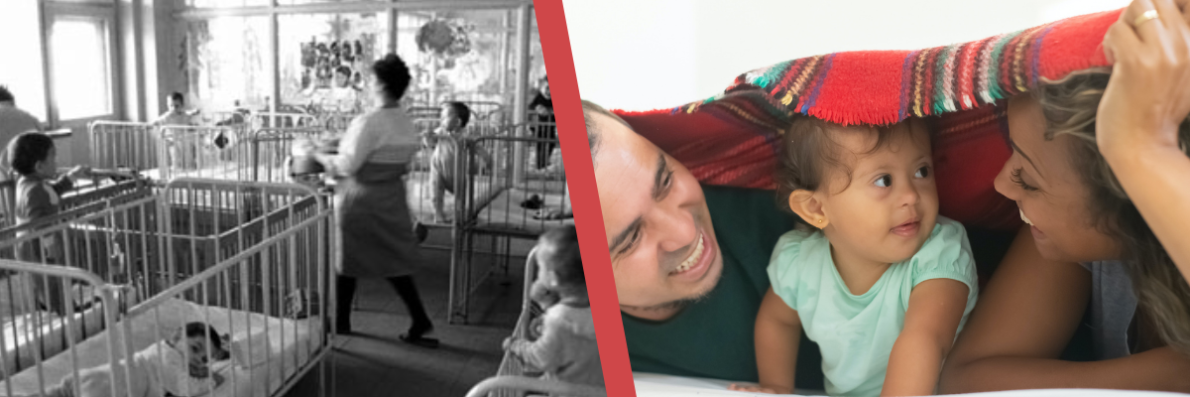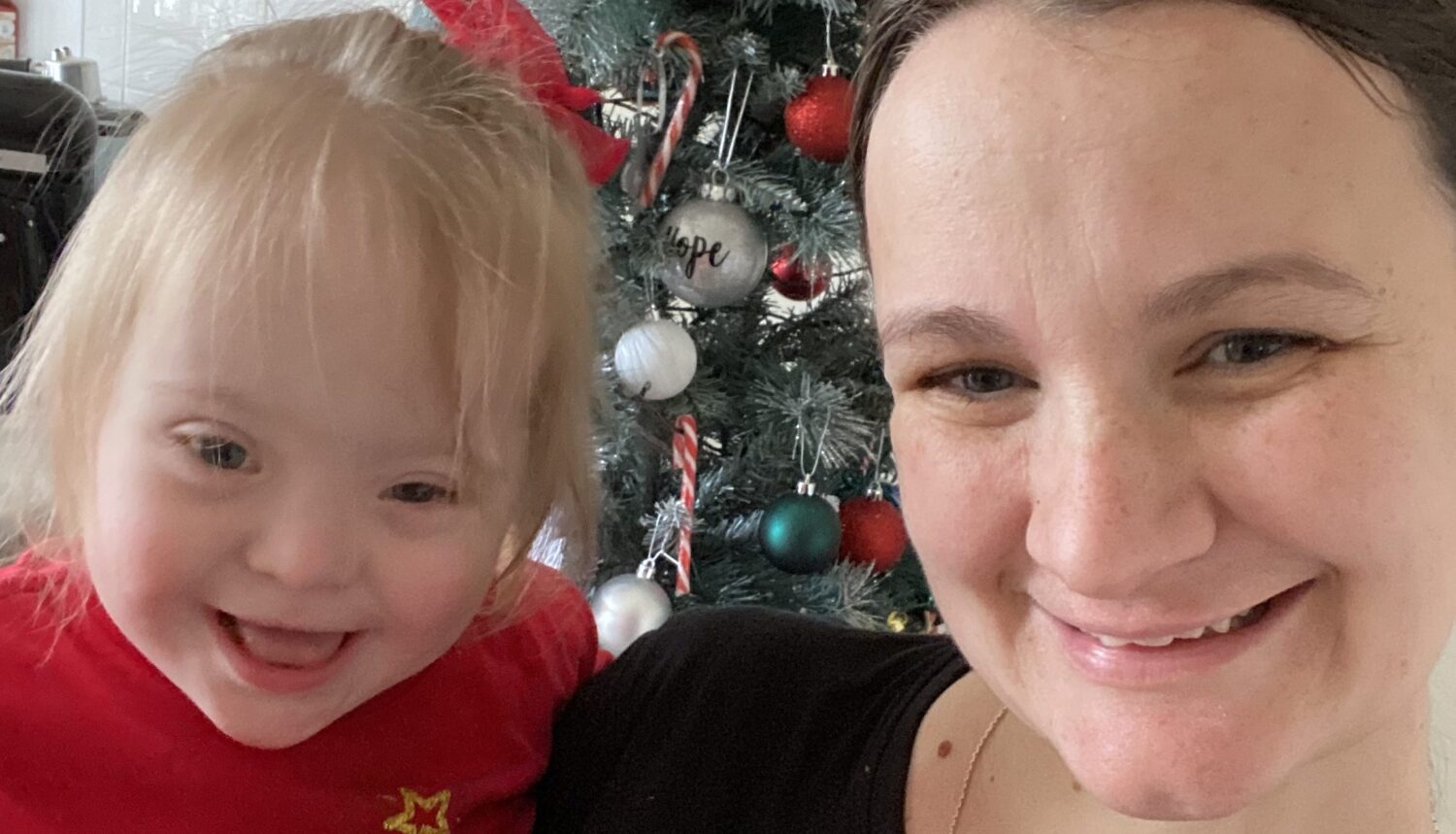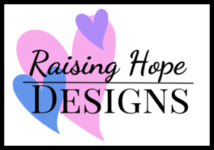
In my last blog, I mentioned at the end that I was glad we are living in a world that has somewhere for everyone and no longer simply locks people away in institutions because they are considered “too difficult”. It got me thinking about what actually happened all those years ago, and how different it is. So while doing a bunch of research and reading some, at times, depressing stories, I thought I should write about it. The comparison of Down syndrome, then and now.
THEN
Back in the ’50s, ’60s, and ’70s, most parents who birthed a child with Down syndrome were encouraged to put their child into an institution. Often it was very soon after birth, giving the parents very little time to learn or discover anything about their child or what they could be. Parents would basically be “convinced” by medical professionals that the child was “less human” and they would struggle to raise them and meet all their needs. These children were locked away so that the rest of society did not have to see them or know of them. Often these institutions were in terrible conditions but there was so little care given to these kids that they just continued to run without change for years.
It honestly horrified me to read the stories of how little people cared for these kids and how they treated them like they weren’t worthy of being loved. There are stories of kids being restrained by shackles and teenagers in nappies because nobody bothered to care enough to toilet train them. It’s like these children were given a cruel punishment and their only crime was that they had Down syndrome, something that was completely out of their control.
In my research I came across the following comment:
“I was a child of the 50s and cannot remember ever seeing a child with Down syndrome. I can however remember snatches of adult conversation regarding children who are “not right” and how the parents “had to” put them away. In the late 60’s I had a placement in a mental hospital which had a wing for “incurables” as my mentor wanted me to have wide experience of how people with mental illness were treated and for the first time met patients or “inmates” as they were often referred to who had Down’s and had lived all their lives in institutional care. Drugs were widely administered in order to make them docile and the staff seemed to have no role other than to keep them under control. Most never had a visitor and seemed totally without any vestige of a normal life.”
Let me just break that down a little: Firstly, as a child, they cannot remember seeing others with Down syndrome. Why? It’s simple. Mostly, because they were locked away in institutions. By institutionalising them, they were telling people there was something “wrong” with them. They were telling them they weren’t normal. It just makes me angry. Of course, even now you may go through childhood without seeing a child with Down syndrome but the reasons for that now, are likely very different and includes some kids going to support schools or increased termination rates (which I’ll talk about a little later).

Next, I want to look at the words that were used to describe these children with Down syndrome These were not this particular person’s views or words, but the words they heard come from others. Adults spoke about the kids being “not right”. We learn from the adults around us. When kids hear this talk, of course, they believe it to be true. This is what made it hard back then, and makes it hard now, to change perceptions. In the institutions they were considered “incurables” or “inmates”. They are not diseased, they have done nothing wrong, they are people, just like you and I. I know there are still people out there that use some terrible language to describe those with disabilities or Down”s syndrome, and we will continue to work to change that, but I hope these terms are used far less or not at all now.
This person also spoke about drugs being widely administered. I’m not going to say these were not required. Perhaps, they were needed for some however, I get the feeling that they were just given to everyone because they didn’t put in any time or effort to actually get to understand the children or their needs. If people had bothered to love, care and get to know them, perhaps they wouldn’t need all the drugs.
Lastly, and possibly the saddest part of that person’s experience was that most never had a visitor. Did parents really just give up their baby and then never want to visit or see their own child? To just put them in an institution is one thing, but to basically then forget or ignore that you had that child and never visit or follow up to see how they’re doing is just sad. Perhaps if more people visited and saw the terrible conditions the children lived in, something would have been done sooner to get them out. I don’t know. Perhaps the idea of having a child with Down syndrome was just so terrible or shameful that they didn’t want to remember they had that child. I can’t speak for those people, I don’t know what they knew or didn’t know about Down syndrome but regardless of what was known, a child is a child and I don’t know how anyone could just forget about their own.

With most kids going into institutions, there really wasn’t any other support services out there. There really wasn’t much need for them. When a parent did fight to keep their child at home and keep them out of the institutions, they were on their own. They didn’t know what to do, they didn’t know what help they would need, or what therapies or services were needed. They had to figure it out by themselves and then work hard to ensure they could afford everything.
Professionals often considered it impossible for those with Down syndrome to learn how to speak, read or write. They never expected them to walk properly which meant they weren’t expected to do much of any kind of physical activity. Then there were the things like dressing, feeding, and caring for themselves which were all considered things that these children would never be able to do. With these thoughts, it’s almost understandable that they didn’t offer any kind of support services. They would have felt like any support would have been pointless. Not only were therapies or support not considered but education was not considered to be of high importance either. As mentioned, the kids were not expected to talk properly, read or write so they didn’t feel like education would be of any help.
NOW
When we think about all that, we often think that it must have happened hundreds of years ago, but it was only 40 or so years ago that change began to happen. In the ’70s and ’80s, we began to see the end of these institutions. People began to see those with Down syndrome as ‘human’ and the institutions inhumane. Babies with Down syndrome now live at home with their parents, they go to school and they can have a much more normal life.

A lot has been learned over the last 40 or so years about Down syndrome. People are realising that these children can live a life similar to the rest of us. We now know that with love and care, these children can learn and develop skills, they can be a part of our lives and not be a hindrance. While there are still some learning difficulties, we know that these children are not “impossible”.
There have been huge changes and improvements in the services and support now available to parents. With the closing of institutions, we are learning more about exactly what everyone is capable of. We are learning about what therapies and what services are needed to improve their lives and to ensure they have the best chance at living a life like everyone else. We are encouraged to see speech therapists, physiotherapists, occupational therapists, and anything that will help our children to achieve their goals. Not only are we now encouraged to see therapists and specialists, but we now have the NDIS (National Disability Insurance Scheme) which covers many of these services. The NDIS is still very new but it means that supporting our children and their extra needs is now easier than it has been in the past.
Outside of institutions, children with Down syndrome are now able to go to school and currently have the option of participating in mainstream school or going to a specialty school with extra support. IQs have increased by about 20 points and the majority of kids will now learn to read and write and often go on to post-secondary education. Many even get jobs. This was almost unheard of years ago.
Due to the neglect, abuse, and lack of education and medical care, those with Down syndrome often died young while in the institutions. In the early 1900s, a child with Down syndrome was lucky to see their 10th birthday. In the 1980s the average life expectancy had risen to about 28 years old but in recent years we have seen this increase significantly and the life expectancy in Australia is now 60 years old. The biggest increase in this life expectancy happened as the institutions became a thing of the past. More care was given to those with Down syndrome and more medical advances were made allowing them to live longer and fuller lives.
With all the improvements we have seen in the lives of those with Down syndrome, and the more we learn about just how much they are capable of, you would think that being told your child potentially has Down syndrome wouldn’t be such ‘terrible’ news. You would think if people knew and understood what support there is now, and that they were capable of living more independently than once expected, there would be more acceptance. You would think you’d see more people with Down syndrome in our schools and our parks, bringing joy and showing the world what they can do but the truth is, many are simply not given the chance. In Australia, it is estimated between 90 – 93% of babies are terminated when they are expected to have Down syndrome. In the United States, around 67% are terminated. In France, it is 77%. In Denmark, 98% of pregnancies with a Down syndrome diagnosis are terminated and in Iceland, almost 100% of babies are terminated if they are diagnosed with Down syndrome. If you think we are living in a world that is accepting, I would disagree. We are fighting for it, and many are trying, but with these numbers, I would think we are far from acceptance.

*Not 100% to scale
With all the development and medical advances, we’ve also seen great improvements in testing. During pregnancy, there are a few stages of testing you can go through to discover more about your unborn baby. The first test that screens for Down syndrome is the nuchal translucency test which measures fluid around the baby’s neck. If this is higher than normal, then you can opt to have non-invasive prenatal testing (NIPT) which is a blood test and can give a higher and more accurate reading of whether your baby may have Down syndrome or other genetic abnormalities. Lastly, if you really want to be sure, you can get an amniocentesis which will confirm the diagnosis. They say the NIPT has around 99% accuracy, so an amniocentesis is unlikely to show a difference if the NIPT has given a positive reading. This improved testing is amazing, and I think it’s great for parents to be able to have this testing so they can be fully prepared for what is ahead of them however, what we have seen is that this prenatal testing has increased the number of terminations. When people are given a diagnosis of Down syndrome, they are given very little information about what that means and are often encouraged by medical professionals to end the pregnancy. I don’t know why this is happening, but sadly it is. People need to be given all the information, they need to know that having a child with Down syndrome isn’t the end of the world and they need to be encouraged and championed. They need to know they are not alone.
In October 2021, Down Syndrome Australia released a paper about Prenatal Screening for Down syndrome. You can read the full report here: https://www.downsyndrome.org.au/wp-content/uploads/2021/10/DSA_Prenatal-Screening-Experiences.pdf
They surveyed 320 parents of a child with Down syndrome and shared some quite disturbing findings. Here are a few things they found out:
- 49% of families felt pressure from their healthcare provider to terminate.
- 42% of families said they received negative information.
- 42% of families were told information that they now know to be untrue.
- 45% of families felt like they didn’t receive appropriate support.
- 47% of families felt like they didn’t get the information needed to understand Down syndrome.
- 69% of families felt the information they received did not give an understanding of lived experiences of people with Down syndrome and their families.
On top of this, the information received by families was just not adequate for them to make an informed decision.
- 52% received verbal information about termination.
- 37% received a verbal summary of Down syndrome.
- 20% received a flyer.
- 15% received links to other organisations.
- 12% received a pack from a Down syndrome organisation.
These numbers are just not right. The first thing people need is information about the diagnosis, not a lesson in how to organise a termination. These numbers need to be flipped.

I wonder if the problem is that the medical professionals themselves are not equipped with all the information. Perhaps the main experiences they have with kids with Down syndrome is when they see them in the hospitals and they don’t see the positives or the good parts of their lives. I really don’t know, I just know that something needs to change.
For someone to make a decision, they need all the information. They need information packs, they need to be linked to organisations that can give them more information and it needs to be more than just a simple flyer. They need to be put in touch with other families so they can hear from those who have been through it. I would be completely happy to put my hand up to talk or to give my number to any parent who had just been given the diagnosis and I know many others would do the same. In my opinion, with people being able to live such normal lives with Down syndrome, there is no need for termination discussions to happen this frequently.
When I read all this information, it just makes me more determined to make a change, to find out how we can make a difference. The question is, where do we start? Well, we start here, with a blog and we share our story. The next step: we’re still working on that.
If you know of someone who has had a recent Down syndrome diagnosis, or is going through testing, please feel free to reach out to us. We would love to help them on their journey and stand with them! Click here to contact us.
SUBSCRIBE
Don’t miss ou on any news or new blog posts. Subscribe to our blog to receive a monthly newsletter with our latest blog posts.
